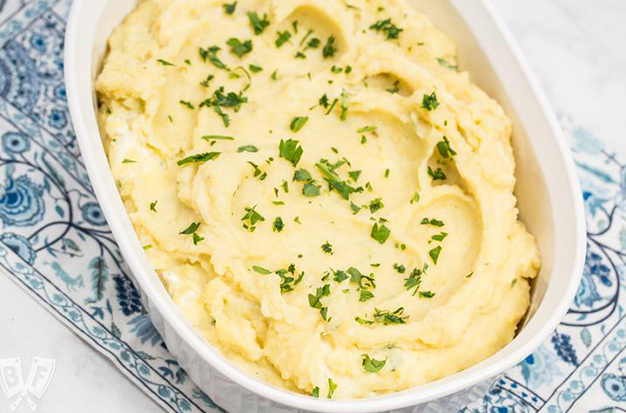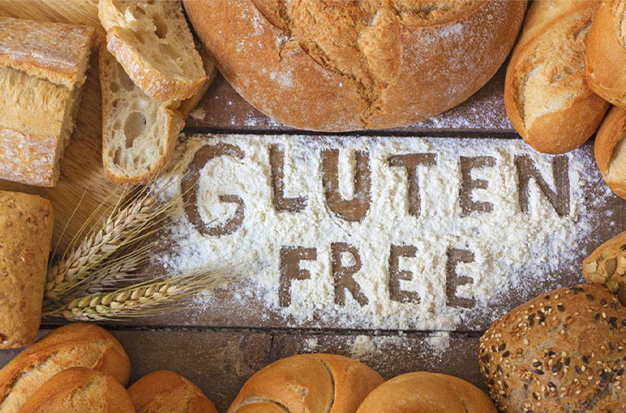A gluten-free diet forgoes anything that contains gluten, a family of proteins found in things like wheat, rye, and barley.
Non-celiac gluten sensitivity (NCGS) and celiac disease both require a gluten-free diet. At this time, the only treatment for celiac disease is a gluten-free diet.
In-depth information about gluten-free diets, including foods to eat and stay away from as well as potential advantages and disadvantages, is covered in this article.
Table of Contents
What Is Gluten?
Wheat, barley, and rye are just a few of the grains that naturally contain the protein called gluten. It functions as a binder, holding food together and adding a “stretchy” quality—imagine how a pizza maker would toss and stretch out a ball of dough. The dough would easily tear without gluten.
The following grains also contain gluten: wheat berries, spelt, durum, emmer, semolina, farina, farro, graham, khorasan wheat, einkorn, and triticale (a mixture of wheat and rye). Oats, despite being naturally gluten-free, frequently contain gluten due to cross-contamination when grown close to or processed in the same facilities as the grains mentioned above. Wheat gluten, or seitan, a well-known vegan high-protein food, is another name for gluten. Soy sauce and modified food starch are less obvious sources of gluten, but gluten-free versions of these products are available and clearly marked to comply with U.S. regulations. The gluten-free labeling policy of the Food and Drug Administration.
What Does Gluten-free Mean?
A food that is free of gluten, a family of proteins found in wheat and other grains, is said to be gluten-free. Gluten lends some elasticity to bread and aids in the binding of baked goods.
As the name suggests, a gluten-free diet forgoes all foods and beverages that contain gluten.
The three primary dietary sources of gluten, according to the Celiac Disease Foundation, are items that contain:
- wheat
- rye
- barley
Along with some other foods, triticale, a more recent grain that is a rye and wheat hybrid, also contains gluten.
Any foods that are naturally gluten-free, such as vegetables, fruits, grains like rice or quinoa, seafood, and meat, may be consumed by anyone adhering to the diet.
A gluten-free diet is beneficial for everyone, but it is especially important for people with celiac disease or gluten sensitivity.
Following a gluten-free diet can help prevent the symptoms of celiac disease and allow the body to heal from damage.
Who Needs To Avoid Gluten In Their Diet?
People With Celiac Disease
People with celiac disease, an autoimmune reaction to gluten that causes the body to attack the small intestine and cause stomach pain, nausea, bloating, or diarrhea, must follow a gluten-free diet. Celiac disease patients require a gluten-free diet for the rest of their lives because they are unable to tolerate any form of gluten. You’ll probably experience the same symptoms you did prior to going gluten-free if you have celiac disease and unintentionally consume gluten.
People Who Are Allergic To Wheat
Certain foods containing gluten should not be consumed by people with a wheat allergy, but they should be avoided nonetheless. Their bodies’ immune reactions to wheat can result in symptoms like a headache, rash, or sneezing. They are still able to eat barley and rye, which both contain gluten.
People With Gluten Sensitivity
Non-celiac gluten sensitivity, also known as gluten intolerance, is another illness that might make someone decide to eliminate gluten from their diets. The term “gluten intolerance” and “how to explain it” are not well defined. We are aware that some individuals who consume gluten experience negative health effects.
It’s crucial to avoid assuming that gastrointestinal discomfort is brought on by gluten. Rajagopal suggests consulting a doctor and a registered dietitian if you suspect you may be suffering from a gluten intolerance in order to determine the cause of your symptoms.
Since there is no test for gluten intolerance, we could try an elimination method like the low FODMAP diet. This is a short-term eating regimen that forbids many foods, including those made from wheat, that may aggravate the gastrointestinal tract. If gluten is what’s causing the irritation, you might see an improvement in symptoms like:
- Bloating
- Constipation or diarrhea
- Fatigue
- Gas
- Stomach pain
Gluten And Health Benefits
The majority of the time, foods that contain wheat and are commonly found in our diet are linked to gluten. Some people are hesitant to include wheat and gluten in their diets because of negative media coverage of these foods. There isn’t much published research to back up these claims; in fact, the opposite is suggested by published research.
Long-term dietary gluten consumption was not linked to an increased risk of heart disease, according to a 2017 study involving more than 100,000 participants who did not have celiac disease. The findings even raised the possibility that non-celiacs who avoid gluten may experience an increase in their risk of heart disease as a result of a possible decrease in whole grain consumption.
- The consumption of whole grains has been linked in numerous studies to better health results. For instance, groups with the highest intakes of whole grains, including wheat, had significantly lower rates of heart disease and stroke, the onset of type 2 diabetes, and deaths from all causes than groups with the lowest intakes (less than 2 servings daily).
Additionally, gluten may act as a prebiotic, nourishing the “good” bacteria in our bodies. It has been demonstrated that the prebiotic carbohydrate arabinoxylan oligosaccharide, which is derived from wheat bran, increases bifidobacteria activity in the colon. Normally, a healthy human gut contains these bacteria. Gastrointestinal disorders like inflammatory bowel disease, colorectal cancer, and irritable bowel syndrome have been linked to changes in their quantity or activity.

Are There Any Dangers Associated With A Gluten-free Diet?
There are some risks associated with a gluten-free diet. According to a 2018 studyTrusted Source, three areas of concern exist, including:
- deficiencies in nutrition A person who avoids gluten may not consume enough of the fiber, iron, and other nutrients found in whole grains. However, well-planned gluten-free diets are unlikely to result in nutrient deficiencies, making them suitable to follow permanently.
- Costs: A typical price difference between gluten-free and regular products is up to 267%.
- Social and psychological impact Eating gluten-free can make social situations more challenging and lead to the emergence of obsessive traits and ways of thinking.
Foods To Avoid On A Gluten-free Diet
Avoiding any foods that contain particular grains should be your main priority when following a gluten-free diet. There are several sources of gluten, including:
- wheat
- rye
- barley
- triticale
These basic components are found in many foods. Typical instances include:
- baked goods, such as bread, muffins, scones, cakes, and cookies
- pasta
- cereals
- beer, including rye beer
- brewer’s yeast
- soups
- malt
- food coloring
When processed in the same facility as wheat-containing products, other products, like oats, may also contain trace amounts of gluten.
Foods To Include In A Gluten-free Diet
A person with celiac disease or a gluten sensitivity can safely eat several food groups, despite the fact that a gluten-free diet forbids eating things like baked goods, pasta, and cereal.
A person with celiac disease or gluten sensitivity is advised by the Celiac Disease Foundation to concentrate on eating things that are naturally gluten-free. Here are a few ideas:
- fresh vegetables and fruits
- dairy products
- meat
- seafood
- beans and legumes
- nuts
- poultry
Many businesses now offer gluten-free variations of well-known baked goods, including pastas, cereals, breads, and sweets. A person should look for a label on the product indicating that it is gluten-free.
What To Look For On Food Labels?
You must read labels to find out if the food you are purchasing contains gluten. Foods must be labeled with the name of the grain in the list of ingredients on the label if they contain wheat, barley, rye, or triticale, or an ingredient made from one of those grains.
Foods must contain less than 20 parts per million of gluten in order to be declared gluten-free, per Food and Drug Administration regulations.
These Labels May Be Found On Food Such As:
- Naturally gluten-free food
- A prepared food that doesn’t have a gluten-containing ingredient
- Food that has not been cross-contaminated with gluten-containing ingredients during production
- Food with a gluten-containing ingredient that has been processed to remove gluten
Alcoholic drinks that contain naturally gluten-free ingredients like grapes or juniper berries may bear the gluten-free label. A label that reads “This alcoholic beverage was processed, treated, or crafted to remove gluten” may be placed on a product made from a grain that contains gluten. But it must be noted on the label that the beverage may contain some gluten and that the amount of gluten cannot be determined.
What Is A Gluten-free Diet, And How Do I Start Eating One?
Speak with a medical professional or a registered dietitian if you want to try a gluten-free diet. They can point you in the direction of an eating strategy that is nutritious for you and balanced.
If you have celiac disease, here are some recommendations for changing your diet:
- Inspect packages for warnings. It’s possible that a lot of non-gluten products were processed in a space that also handled gluten-containing goods.
- Keep dishes, cooking utensils, and other food preparation equipment used for gluten-containing foods apart from your regular utensils.
- To check for any traces of wheat, carefully review the ingredient labels. Additionally, gluten is present in some artificial seasonings and colors.
- When cooking and baking, swap out wheat flour for oat, buckwheat, quinoa, or other gluten-free or alternative grain flours.
Can You Eliminate Gluten And Still Lose Weight?
A gluten-free diet can help people lose weight, but usually only after they cut out a lot of processed foods and refined carbohydrates that also contain gluten. Watch your portion sizes, exercise frequently, and eat plenty of whole foods like fruits, vegetables, and lean proteins if you’re giving up gluten to lose weight.
When I Switch To A Gluten-free Diet, Will I Experience Withdrawal Symptoms?
The idea that people who stop eating gluten experience “withdrawal” is unsupported by scientific research. When suddenly switching from eating a lot of gluten to being gluten-free, some people report experiencing wooziness, nausea, extreme hunger, and even anxiety and depression. If you follow a gluten-free diet for a few weeks, these symptoms should go away, but if they don’t, consult your doctor.
Summary
Anyone eating a gluten-free diet must stay away from any food, drink, or merchandise that has the protein.
Those who are sensitive to gluten will notice that when they stop eating gluten, their symptoms get better. People living with celiac disease need to follow the diet to avoid damaging their health.
There isn’t enough proof to say that a gluten-free diet is advantageous for other people, despite the fact that experts advise these people to follow a gluten-free diet. In people who do not have celiac disease or gluten sensitivity, the dangers of nutrient deficiency outweigh any potential benefits of the diet.

